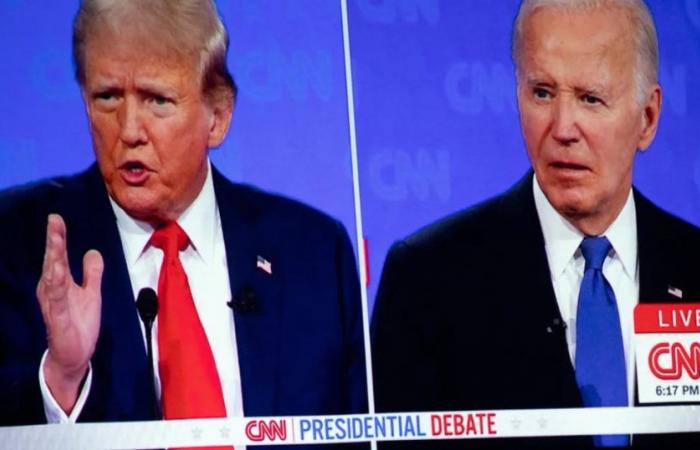The first presidential debate between Joe Biden and Donald Trump made it clear that what is missing has structured the differences between the two options currently presented by Democrats and Republicans in view of the elections in November: lack of vital energy in one case and attachment to the truth in the other.
The combination of these faults seems to matter much more than what both candidates present in terms of past management record and political proposals for the future.
This combination also reveals a situation sad and worrying for the American electorate. It would be the case for the citizens of any country, but the situation is even more bleak in this case given that said electorate has long imagined itself occupying a place of primus inter pares in the world. A place that this set of candidates, beyond their possible virtues in the eyes of their respective voters, seems, at the very least, to question.
This is why thousands of newspaper articles and opinion columns in the media, and countless posts on social media, have been published since the end of the debate. And possibly more will be published in the coming hours and days.
However, there are two aspects of the debate that also lack attention: the role of the media and of individuals in organizing public discussion about politics.
Let’s go by parts.
Much has been said, and possibly will continue to be said, about how the growth of social networks and search engines, and innovation (especially in terms of algorithms and artificial intelligence) are turning journalism into an archaic occupation and traditional media into devalued actors. in political communication.
It is true that journalists and media no longer set the agenda on a daily basis as they did during the twentieth century, nor with the same power of action. But yesterday’s debate reveals how a media event lasting less than two hours has the capacity to organize public discussion like no other communication option could.
The mutation in contemporary political communication seems to be that journalists and media set the agenda punctually, instead of doing it continuously on a day-to-day basis as they used to do when search engines and networks did not exist.
In a brilliant opinion column published this morning in Politico, Jack Shafer breaks down the way in which the rules and format of the debate, which a priori were supposed to favor Biden, ended up working against him. This is because these rules and format, instead of limiting Trump’s mobility and flexibility (seen as two key attributes of his communication capacity), had the counterpart that Biden’s limited vitality was in focus continuously throughout the debate.
And this is where the issue of people becomes relevant, another lack in the current discussion on political communication.
Digital culture relies in part on fragmenting the person. The algorithms that organize the content and transaction offerings on search engines, networks, and streaming and commerce platforms prioritize one aspect of the person to the detriment of others: their age, gender, sexual orientation, race, ethnicity, geographic location, nationality, occupation, purchasing power, among other relevant characteristics.
This fragmentation of the whole person in favor of one of their characteristics is linked to the fragmentation of time and space in the information we obtain on networks. The few seconds and words of a post extract its content from its context of origin: a story is a tweet, a scene is a screenshot.
This fragmentationand its association with increasing political polarization and social segregation in the contemporary world, has been a central tool in many of the successful electoral campaigns of the last two decades, and has often structured political communication strategies in general.
However, in last night’s debate, the audience had uninterrupted and close-up access to Biden. For 90 minutes, the president was a person to whom we had full and continuous access. And we all saw the same thing, even if we interpreted it in different ways.
In 1960, Kennedy and Nixon staged the first televised presidential debate in history, which many political analysts considered a key moment in the development of that campaign in favor of the former. Much has changed since then. However, It is possible that in yesterday’s debate the paradoxes of fate made Biden dress up as Nixon and Trump as Kennedy.
This would be so in part because despite the growing power of networks and their fragmentation strategies, the debate revealed that The media and people matter more than analysts and academics usually consider.
The past always finds ways to inhabit the present.






